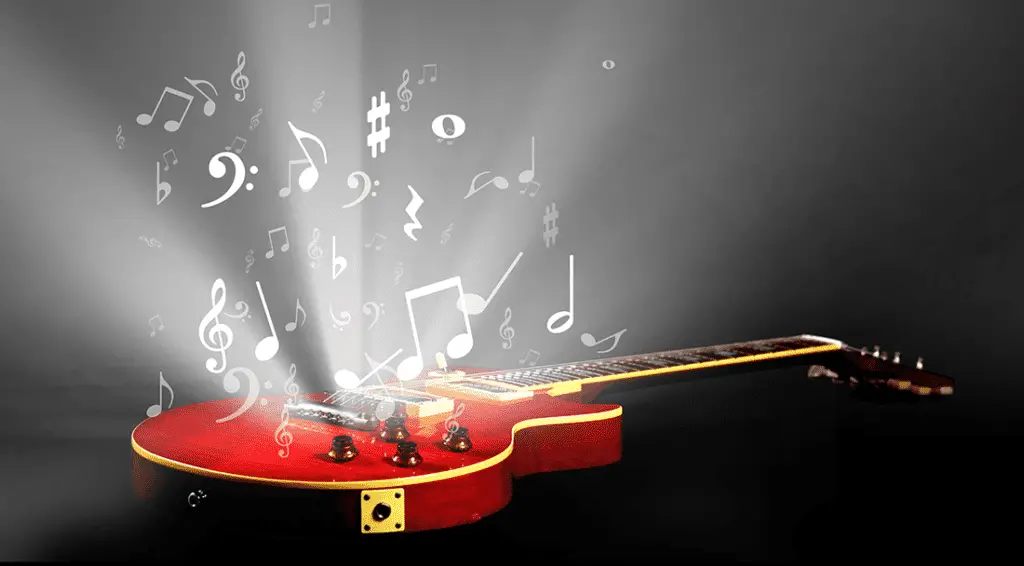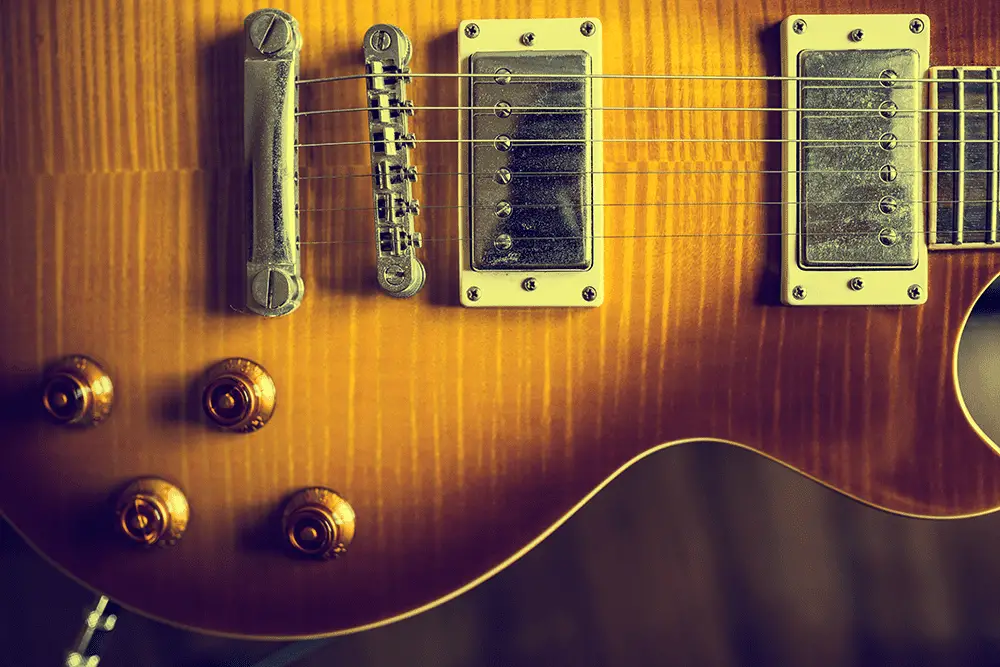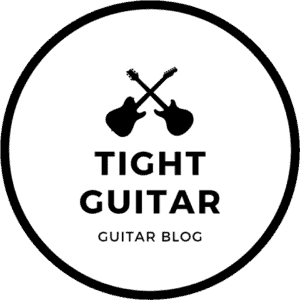
When I just started playing guitar, I used to play all the time and after a relatively short period, I was good enough to justify purchasing a brand new electric guitar. My teacher at the time was sponsored by G&L so I went and got myself a 2nd hand G&L Legacy Special. This was a good guitar no doubt, but was it good for me? Not so much.
A good guitar (subjective term) is a guitar that sounds, feels, and looks good. A good guitar sound is defined by signal clarity, dynamics, and EQ range. Playability is measured by playing and comparing to other guitars, and beauty is a matter of personal taste. All of which make up a good guitar.
In this article, we will break down the problematic phrase “good guitar” which is often misused by many guitar players. We will analyze what is a good guitar using a more measurable set of attributes, and help you understand your guitar much better.
What is a good guitar?

Many guitar players use the word “good” when trying to evaluate guitars, but what does “good” even mean? Does it mean the guitar simply sounds good, or maybe it is just more comfortable? What about functionality traits like intonation and action? Even a design can affect how much you play the guitar, so should you consider this as well?
At the end of the day, “good” is a subjective term that mixes many different traits. It would mean one thing for some guitar players, and for others, it could mean another. So let’s start examining the guitar from different angles and understand what’s important and how to look at things.
Playability and Comfort

A guitar is a tool in the hands of the musician, and like every other type of work tool, it has to be comfortable to hold and operate. Guitars, much like their holders, come in different shapes, sizes, and colors so that anyone can find a guitar that matches his/her anatomy and preferences. Hence, there are a few main traits that affect the comfort and playability of a guitar:
Neck shape
Many beginners don’t even know that guitar necks come in different shapes, but they do! Some guitar necks are thicker or thinner than others, and others are flatter or rounder. The most common neck shapes are the C and D shapes, but you will probably stumble upon other designs like the V or U shape (more common with vintage guitars).
Author’s note: I find the modern neck shapes (D and C) more comfortable and organic. To me, they feel like they were carved with more attention to how my hand moves up and down the neck. I would recommend these neck shapes for beginners or anyone who isn’t experienced enough to have a solid opinion.

Body type
The guitar body has a tremendous effect on our overall playing experience. The thickness of a guitar’s body will determine how far our strumming hand extends out while playing, while the weight of the body will determine the guitar’s center of gravity – guitars with an extremely thin and light body will suffer from a neck dive (like with Gibson SG guitars).
The shape of the body will also affect what we can do with it. For example, V-shaped guitars are much harder to play seated. Moreover, some acoustic guitars come with a cutaway body design which enables the player to reach higher frets. Try comparing as many guitars as possible when deciding what’s best for you.

Fretboard radius

The fretboard radius indicates the curvature of the fretboard along the neck, from the high E string to the low E string. Or, in other words, how round is a guitar’s fretboard. The most common radius sizes are 9.5, 10, and 12. Old Fender guitars have a 7.25 fretboard radius, while metal guitar fretboards can have a 16-inch radius.

Author’s note: Like before, I’d recommend beginners stick with the more popular designs. These guitars would be easier to sell in the future in case you’d want to upgrade or replace your guitar. If you are a metal player, go for the higher radius design (which results in a flatter fretboard).
The guitar weight
A guitar’s weight is especially important for people who perform and rehearse. Standing through sound checks and rehearsals for long hours with a guitar hanging from your neck can be really tiring. Leave your heavy vintage guitars safely stored in the studio and get a lighter guitar for live performances and rehearsals.
Authors note: In this case, I recommend getting a cheap Squire or Epiphone and upgrading it by replacing its pickups. It will sound great, it will be lighter, and you won’t have to worry about it as you do with your expensive guitars.
| Squier Stratocaster + UPGRADE | CHECK PRICE + PICKUP PRICE |
| Squier Telecaster + PICKUPS | CHECK PRICE + PICKUP PRICE |
How to check if a guitar is comfortable enough?

Evaluating a guitar’s compatibility when you’ve just started playing could be confusing, but in fact, it is relatively simple, and no one could do it better than you. Here’s how to do it:
- Play the guitar – make sure to play both open and barre chords, scales, favorable riffs, and songs. Try doing it while standing up and sitting down. It is best not to plug an electric guitar into an amp while checking for playability, as sound can change our perception of the instrument.
- Compare it to other guitars – play the exact same things you played on one guitar on additional guitars and try to focus on the subtle differences between them. Repeat this with as many guitars as possible to get a broad perspective. If the salesperson is giving you a hard time, simply take your business elsewhere.
- Back and forth – Go back to the first guitar and see if you feel an improvement in playability.
- Take your time – Don’t let anybody rush you. You don’t buy a guitar every day. Check the neck – is it comfortable? Do your fingers have enough room to maneuver? The body – Is it too thin or too big? Do a little guitar “play-off” until you end up with you winner.
How it sounds

To evaluate a guitar’s sound accurately, we must abandon subjective terms like “good” or “cool”. Instead, we will use measurable qualities such as clarity, dynamics, and EQ range. Evaluating a guitar through these new lenses is much more objective.
Clarity refers to how clear is the guitar’s tone. Is it easy to fixate on the little details within the signal, or does it sound “foggy”? A guitar sound with good clarity is much more pleasing and will make recording and mixing much easier.
Dynamics refers to the volume range of your guitar sound. Or, in other words, how silent and how loud can you play without turning knobs up and down. Some guitars have flatter or wider dynamic ranges, and It is a personal preference. Some players will prefer a flatter dynamic range (especially if they play a lot with distortions), while others will prefer broader dynamics.
EQ range is the “color” or “character” of a guitar. It refers to the frequencies transmitted by the guitar (or pickups). Some guitars can sound stronger in the higher range, while others can have a robust low-end or mid-range. There is no right or wrong here, you need to pick up a guitar that you like and fits your style.
How to check for a good guitar sound?
To assess a guitar’s sound, plug it into an amplifier, play riffs, scale, and chords in different positions. Let the chords ring out and listen closely to the clarity, dynamics, and EQ range. Always have another guitar (or even a few) for comparison as the changes from one guitar to another might be pretty subtle.
For acoustic guitars, do NOT plug them into an amplifier! It is an organic instrument. Furthermore, acoustic guitar pickups sound almost nothing like their organic source so it would be wrong to test them this way. You can also always replace the pickups with something better, my favorite for acoustic guitars is LR Bags.
Does guitar looks matter?

Besides being a work tool, guitars are also fashionable items as well as stage props. They come in countless different designs and can sometimes be almost as famous as their holders. Can you imagine Slash without his Les Paul? or Hendrix holding anything other than a Stratocaster?
The guitar’s design transmits its artistic orientation, and in a way, is a reflection of the guitarist’s personality. This is why most metal guitars are black or why, on the other hand, we see an explosion of color in everything related to funk music.
A guitar’s looks matter, and you need to love and connect to your guitar’s design. It is a genuine part of the guitar-playing experience. Look for your fantasy guitar, but make sure it is also comfortable and good-sounding!
Your favorite guitar music

If you are still unsure whether your guitar is good enough for you and your music, try researching about your favorite bands and artists and see what they have in their arsenals. It is safe to assume these models will fit your musical pallet.
For example, many rock giants like Jimmy Page (Led Zeppelin) or Angus Young (AC/DC) have chosen the Gibson SG due to its long neck and double-humbucker setup while many funk players, like Nile Rodgers, went with the Fender Stratocaster which is packed with a set of 3 single-coil pickups.
Respected guitar models
Too many choices can sometimes be overwhelming especially for beginners. Should I go with Ibanez or Fender? Maybe Gibson? Humbuckers or single-coils? It’s endless.
The easiest thing to do is to ask for help from someone more experienced. Make sure that this certain individual knows and cares about you and your musical preferences because his/her personal preferences might be different from yours. For those who don’t have that someone in their life, here are a few guitar models that are a consensus among guitar players and are also easy to sell in case you would want to upgrade or replace them.
The Stratocaster

The Stratocaster (came out in 54′) is one of the most popular electric guitar models in almost every musical genre. Its classic setup is made out of 3 single-coil pickups with five pickup modes, and its sound can be described as glossy, shimmery, and bright.
This iconic model has been favored by many guitar legends like Jimi Hendrix, Eric Clapton, Mark Knopfler, and many others, so in case you are still undecided, going with a Stratocaster would be the safe move. In comparison to a humbucker, a single-coil pickup also carries less output which, in my opinion, makes the player put more effort (and soul) into creating the sound he wants. Therefore, it is one of the most expressive guitars out there.
It also has a whammy-bar(!) which is very useful in Rock and Metal, or in much “calmer” genres like Gospel, Soul, R&B, Neo-Soul, etc.
| American Stratocaster | CHECK PRICE |
| Mexican Stratocaster | CHECK PRICE |
| Squier Stratocaster + UPGRADE | CHECK PRICE + PICKUP PRICE |
| HSS Stratocaster | CHECK PRICE |

The Gibson Les Paul and SG models

The Humbucker pickup (PAF pickup) is bigger and stronger than a single-coil or a P90 pickup. It produces more energy due to the fact that it is built out of two single-coil pickups and literally “bucks the hum”, which is why it is also quieter. For these reasons, it was always a good fit for great rockers like Jimi Page and Slash who had these pickups mounted on their Les Paul and SG guitars.
The sound of a humbucker can be described as, strong, round, and warm. It is popular in every musical genre, from soft jazz to thrash metal, and has been the choice of countless guitar legends.
The Telecaster

The Fender Telecaster (released in 51) is one of the biggest “guitar-classics” you can find out there. Packed with a set of two single-coil pickups that are unique to this model, the Telecaster can be both gentle and mean. It fits blues, rock, or R&B players but is liked also by many “heavy-lifters” in many metal bands.
The sound of a (classic) Telecaster is warm, almost glossy in the neck position, but can be more biting and “screamish” in the bridge position, which gives the player a broad EQ range. Telecasters with humbuckers or P90 pickups are also quite popular. If you like the shape and feel of a telecaster but looking for more power, this might be the better choice for you.








